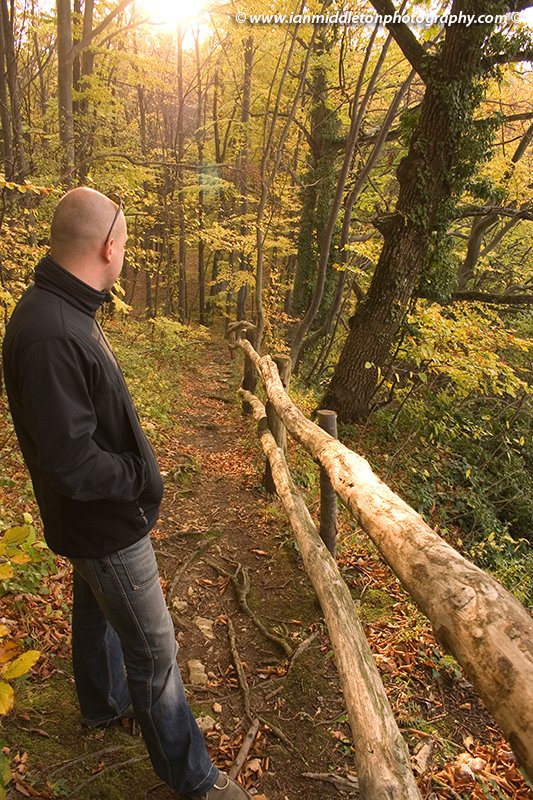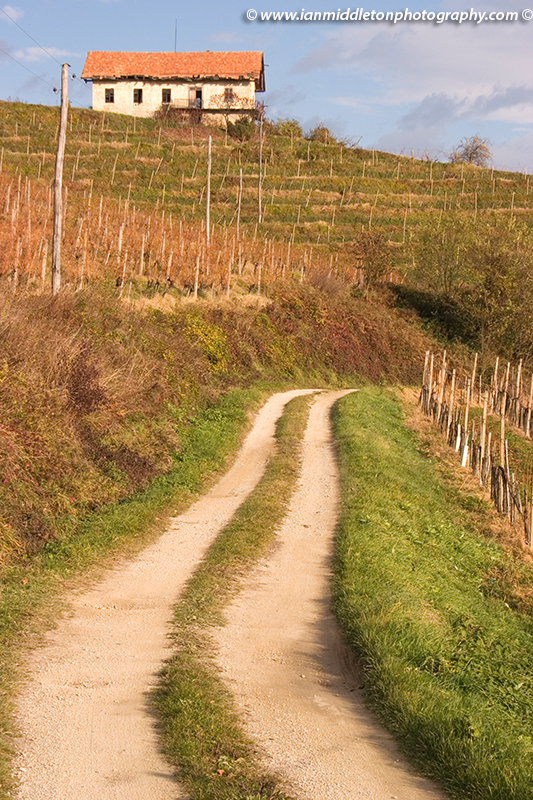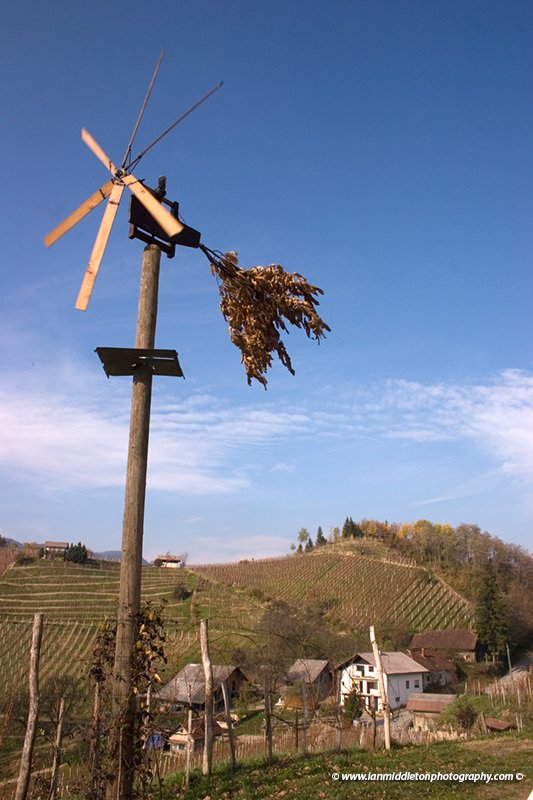The Garden of Eden
Lying in a valley at the far edge of Slovenia, Brežice is a veritable Garden of Eden, where fresh, healing water runs as free as the local wine; fascinating sights, wonderful home-cooked meals, and a world of adventure all await the intrepid explorer.
Gushing forth from their sources in the Julian Alps and the Krka Valley, two of the most famous and mightiest waterways carve their way across the rugged, undulating Slovenian landscape. As you drive south on the motorway the Sava and Krka rivers slowly follow on either side until all three meet at the point between the Orlica and Gorjanci hills, 110 kms from Ljubljana, that is Brežice.
Guardian of the sacred well
As you exit the motorway you won’t fail to miss the turning for Terme Catež. Here you will find the TIC. Just inside the main entrance to the spas, an ugly-looking creature sits in the centre of a fountain, arms outstretched ready to receive the streams of water being propelled towards him.
The thermal springs in this modern resort are named after a legendary half man, half goat and guardian of the sacred springs. He would bring fresh water and food to the locals. But Catež hated to be laughed at, and anyone that dared to mock him and his appearance would return home to find his village destroyed by giant rocks thrown from the neighbouring hilltop. So perhaps it’s best not to refer to him as ugly, after all.
If being pampered on a daily basis is not your style, then there are many more things this attractive little municipality has to offer. Heading east out of town you join the Bizeljsko-Sremiška wine road. First you will pass through the lovely forest of Dobrova, where the last battle for Slovenia’s independence in 1991 was fought, but is now a protected, peaceful haven for the area’s wildlife. In the village of Gregovce you will find the oak tree with the largest girth in Slovenia, and nearby is the largest population of the bee-eating bird.
Repnice, turnip caves in the sand
In ancient times this region lay deep beneath the Pannonian Sea, until it dried out and tectonic activity caused the land to rise. Much of the sea basin comprised of silicate sands, in which the wonderfully unique Repnice caves were dug. Along the road to Bizeljsko there are many vinotekas where you will find these caves. One of the best to visit is Graben, where Janez Šekoranja, a comical character whose long, bushy moustache masks a wry smile as he tells you the history of the area, interspersed with dry wit and quality wine tasting. Outside the strong winds spin the large Klopotec that echo across the valley of vineyards. You can take a fascinating look inside his smoothly dugout Repnice, and experience for yourself how each level provides a lower storage temperature.
From here you can continue on up the hill to the Bizeljsko Castle, in which a woman has lived alone with her four children for 20 years. Upstairs you can visit the chapel, where the large altar and beautifully carved ceiling are undergoing restoration. On the road up to the castle, you will see a sign for Lovski Dom, which is a small cottage used by the hunting society. From this house is a stunning panoramic view across the valley. You can also see the Croatian village of Kumrovec, the birthplace of Tito.
On your way back down, as you pass once again through Bizeljsko, pay a visit to the church on the hill, whose priest apparently joined in order to “not have to work anymore”.
By this time you may be hungry, so pop into one of the gostilnas and try some of the excellent home-cooked meals and some local specialities like the buckwheat roll, and wash it all down with some Bizeljcan wine.
A town divided
In ancient times this region was split between the kingdoms of Styria to the south and Carniola to the north, the river being the border. The Celts, Romans, Turks and Slavic tribes all passed through here. Nowadays the region is still divided and as you drive across the old double bridge that crosses the rivers before they converge, you move from the region of Štajerska to Dolenjska. This may not seem like far, and you could be forgiven for thinking that there isn’t much difference. The difference actually lies in the soil, which ultimately produces a different type of wine. The Cvicek wine in the south is a light red wine with slightly lower alcohol content, but equally tasty. Here on the south side you’ll find the Podgorjanska wine road.
On the south bank of the river is the newly developed Active Vacation resort, where you can rent canoes, have picnics, and play a variety of sports like: volleyball, badminton and archery. A large portion of the riverbank has been reclaimed and turned into a small, stony beach. This company can also arrange a paintball game for you in the nearby forest. Large businesses, who would like to give their employees a chance to de-stress, can undertake a specially arranged version of the game called Anger Management, where the only target is the company director. Although if you do, you may find things don’t go too well at the next company pay review.
Getting back to nature
The local tourist office offers many different excursions available to groups who book ahead. One such tour involves throwing away all the modern luxuries of life and camping out in the forest. Here you will learn how to live off nature; finding your own food and building your own shelter for the night. If you don’t have the stomach for catching a rabbit, then another option is to eat snails. Which would you prefer?
Hiking trails
Like most places in Slovenia, there is an abundance of hiking trails. Above the village of Catež ob Savi, lies the hill of Šentvid. This is a popular hike for the locals. Along the country road you will spot a sign for the paintball. Here is the start of the trail, which leads up through the forest. At the summit lies the church of Sv. Vid, from where you’ll find a marvellous view of the town and valley.


2500 years ago this area was home to a village known as Halstatsko, and was a strategic point because of its panoramic view. No one could enter the region without being spotted from this hill. The spot where the church stands was once home to the village chief. The current structure was built in the 13th century, and lays claim to being one of the oldest churches in Dolenjska. Inside the entrance to the church is the bell rope. Ring this bell and make a wish, it might come true. In a small wooden box is a book where all visitors must record their visit. Behind the church is a small pit, where a fire is lit every year on the 1st of May holiday. In the old days these fireplaces were used when the Turks invaded, to warn of their coming and guide people to safe places around the town.
I like to ride my bicycle
There are many different cycling routes around the municipality and the rest of this great region. The visitor can either embark upon a self-guided tour or book a guided group tours.
If you visit in winter and are not partial to hiking or cycling in the cold, then you can still indulge yourself in the thermal spa resorts, visit the wine cellars and repnice or marvel at the majestic snow-covered castles guarding the valley entrance on the Croatian side.




















